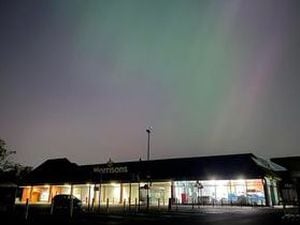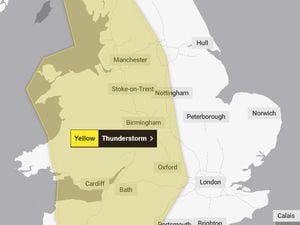Planners urged to 'make the most' of brownfield sites
West Midlands Mayor Andy Street says housing planners in the Black Country are not making the most of the available brownfield sites.

He insists greenbelt land under threat through the Black Country Plan can be saved, with dozens of old industrial sites available to be brought back into use to meet the region's housing need.
On paper it seems like a tall order, with the Black Country needing 3,761 new homes a year until 2039 to cater for its growing population.
But across the region a number of major schemes are already up and running or in the pipeline on old industrial sites, having been launched as part of the West Midlands Combined Authority's "brownfield-first" approach to development.
The policy has seen the authority use funding won from the Government to support developers with the clean up costs of contaminated former industrial sites, which can run to hundreds of thousands of pounds.
Any developer that uses this cash for housing must commit to at least 20 per cent being "affordable", which is linked to income rather than the housing market.
Mr Street said the approach has helped the West Midlands double its rate of housebuilding in just five years, with the vast majority of new homes coming on brownfield land.
Here are some of the current schemes:
Friar Park Urban Village

A consultation has recently concluded over plans for 750 homes at a site in Friar Park, Wednesbury.
The site, which covers 27 hectares and is one of the region's biggest brownfield plots, has been allocated for housing for years.
The proposed development has been put forward by Sandwell Council and the WMCA. It includes a mix of new homes and open spaces with pedestrian, cycle and transport links to surrounding areas.
Fountain Lane, Oldbury
The WMCA has struck a £3.95 million deal to clean up the site, which has stood derelict for more than a decade.
The scheme will see 234 homes built, including one and two-bedroom apartments, as well as two, three and four-bedroom houses.
The WMCA says a total of 49 per cent of the new homes will be for affordable rent and shared ownership tenures.
Former Cookley Works site, Leys Road, Brierley Hill
A total of £1m will be spent to clean up the Dudley site to make way for 71 homes.
It has stood derelict since the last business based there closed in 2007, ending more than 150 years of steel industry on the site.
The plans include a mix of affordable rent and low cost home ownership.
Steelhouse Lane, Wolverhampton
Back in 2019 Lovell Midlands received a £770,000 cash boost from the WMCA to clean up the land and started work on a scheme dubbed the Saints Quarter.
The site, which had been derelict for more than 10 years, hosts 151 homes, including two, three and four-bedroom properties.
Former Harvestime Bakery, Raleigh Street, Walsall

A scheme for 88 homes was rubber-stamped by planners 12 months ago.
Council chiefs said the mixture of houses and apartments would regenerate an area that had been blighted by fly-tipping and anti-social behaviour.
Former Caparo steelworks, Green Lane, Walsall
The WMCA announced a funding deal in February 2020 allowing the sprawling site next to the A34 to be brought back into use.
It will see 252 homes on the site, which had been earmarked for development for years.





